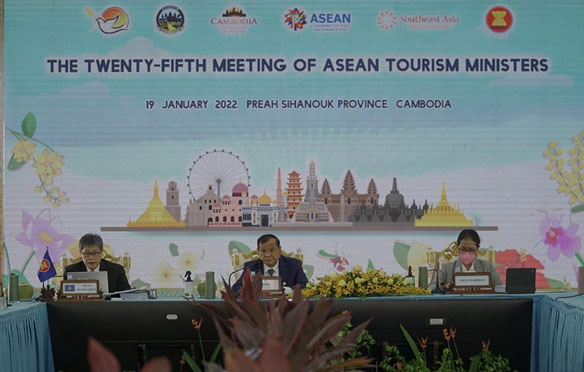January 2022
TICA
mice
UPDATE

Reality check on ASEAN tourism losses
ASEAN tourism ministers face a reality check as the latest data on the region’s tourist arrivals shows a massive drop of 211.33% since 2020 caused by Covid-19 lockdowns.
This article was originally found on TTR Weekly.
ASEAN’s Tourism Ministers, who attended in-person or virtually during their meetings earlier this week, said the massive 211. 33% decline caused the loss of millions of jobs and business closures due to stringent travel restrictions across the ASEAN 10-country region.
Despite their optimistic reopening tourism declaration announced at the opening celebrations at ATF in Sihanoukville, strict travel restrictions continue to hold back tourism recovery, particularly in Thailand, Indonesia and Vietnam. Thailand is considering this week a proposal to resume its Test & Go scheme after public health authorities suspended it following the emergence of the highly contagious Omicron variant in mid-November. It immediately stalled recovery and impacted regional travel to other ASEAN destinations.
Countries that counted tourists by the million have faced two years when tourist arrivals shank to just a few thousand. Thailand saw visits fall from close to 40 million in 2019 to around 200,000 at the close of 2021. It looks forward to welcoming 5 million tourists this year, or if Chinese tourists return possibly 8 million.
Tourism ministers count on travel resuming from China, Japan and Korea over the next six months to kick-start recovery. Still, there are no immediate signs that China will reopen the door for outbound travel any time soon. Tourism experts warn that despite what tourism ministers declare, recovery to anything like pre-pandemic arrival levels is unlikely until 2024 or beyond.
In the meantime, ASEAN’s tourism ministers focus on restoring and strengthening objectives to nudge recovery. They need to restore the ASEAN tourism sector to get jobs back and support the reopening of tourism businesses. It will take massive financial bailout schemes that have been few and far between over the last two years of the pandemic. Beyond that, strengthening cooperation to adopt a more sustainable, responsible, and resilient tourism model remains challenging.




